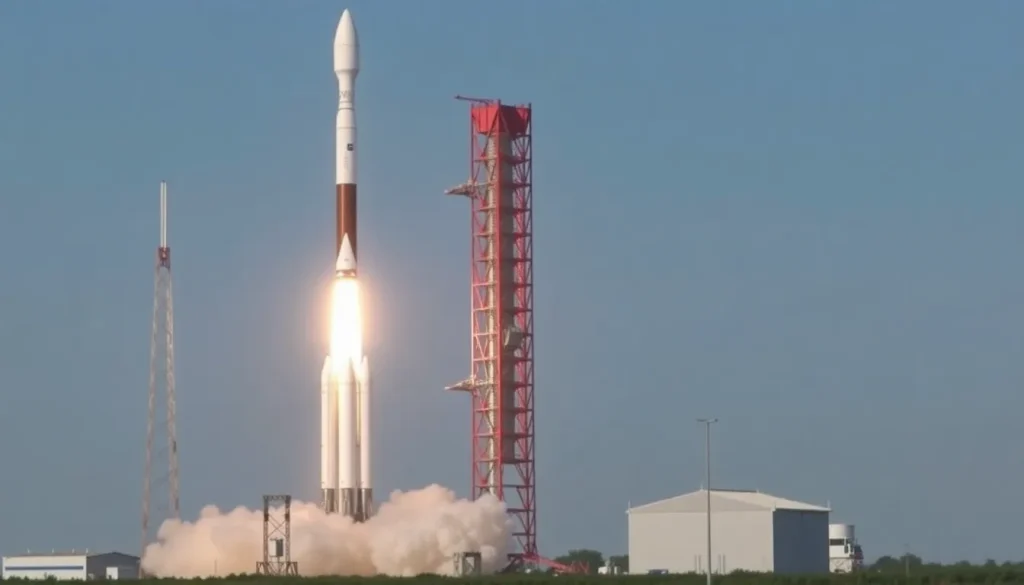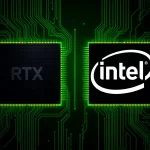European Rocket Reuse Test Delayed; NASA Updates SLS for Artemis II

As the space industry continues to evolve, the need for reliable launch vehicles and innovative technology becomes increasingly crucial. Recent developments highlight the challenges and advancements faced by various space organizations, showcasing both the potential and the obstacles that lie ahead. This edition of the Rocket Report delves into the latest news, shedding light on key players in the space sector and their ongoing missions.
- The looming impact of potential government shutdowns on NASA missions
- Developments in rocket launches and company strategies
- Astra's ambitions for Rocket 4
- Avio's expansion plans amidst rising demand
- Challenges faced by new players in the industry
- Innovations in NASA's Space Launch System (SLS) for Artemis II
- Market dynamics and the future of launch frequency
- Upcoming launches to watch
The looming impact of potential government shutdowns on NASA missions
The upcoming U.S. government shutdown could have significant implications for NASA operations, particularly affecting numerous science missions that are currently in progress. The White House has indicated a desire to halt funding for several projects within the science directorate, which could disrupt critical research and exploration efforts.
As we approach February, the timeline for the Artemis II mission looks promising, as long as any government closure does not extend indefinitely. This mission aims to send astronauts around the Moon and back, marking a crucial step towards establishing a sustainable presence on the lunar surface.
Developments in rocket launches and company strategies
Rocket Lab's financial strategy: In an effort to enhance its financial standing, Rocket Lab announced plans to raise up to $750 million by selling common shares. This decision replaces a previous agreement that allowed the company to sell $500 million in stock, of which approximately $396.6 million was utilized. The company aims to bolster its cash reserves to support the ongoing development of its Neutron rocket and expand its spacecraft manufacturing capabilities.
Despite the potential for increased funding, Rocket Lab's stock saw a decline of around 10% following the announcement, indicating market concerns about the company's financial strategy.
Astra's ambitions for Rocket 4
Astra is positioning itself to reenter the launch market with its Rocket 4, targeting a debut flight in mid-2026. This vehicle is designed to enhance Astra's capabilities to deliver payloads, featuring a new engine that produces 42,000 pounds of thrust. The first stage will utilize two of these engines, while the upper stage will be powered by a Hadley engine produced by Ursa Major.
Competitive pricing strategy: Astra plans to offer competitive pricing for its launch services, aiming to place around 750 kilograms into low-Earth orbit for approximately $5 million. This pricing strategy is intended to attract customers seeking alternatives to established players like SpaceX, particularly in an increasingly saturated market.
Avio's expansion plans amidst rising demand
Capital increase for growth: Italian rocket manufacturer Avio has proposed a €400 million ($471 million) capital increase to enhance its production capacity. This decision comes as a response to the growing demand in the global space and defense sectors. The capital raise is part of a comprehensive 10-year business plan targeting an average annual growth rate of about 10% in turnover and over 15% in core profit.
- Increased launch cadence for Vega C
- Introduction of the Vega E rocket
- Participation in the Ariane 6 program
- Establishment of a new defense production facility in the U.S. by 2028
Challenges faced by new players in the industry
Isar Aerospace's learning curve: Isar Aerospace recently addressed the complications encountered during its Spectrum rocket launch, which resulted in the vehicle activating its flight termination system shortly after liftoff due to a loss of attitude control. Despite this setback, company officials view the first launch as a valuable test flight and are working towards a second attempt as soon as possible.
Callisto rocket test setbacks: The inaugural flight of the Callisto reusable rocket demonstrator has been postponed from 2026 to 2027. This project is a collaboration between CNES and other international space agencies, aimed at advancing reusable rocket technology. The flight test campaign will include integration phases and multiple test flights, all scheduled over an eight-month period.
Innovations in NASA's Space Launch System (SLS) for Artemis II
NASA has declared its Space Launch System (SLS) rocket "ready" for crewed flight in the upcoming Artemis II mission. Following the inaugural flight of the SLS in late 2022, several modifications have been made to enhance its performance and safety.
- Improved navigation systems compared to Artemis I
- Enhanced communications capabilities with repositioned antennas
- Early jettison of spent boosters during ascent to optimize payload capacity
These changes are designed to mitigate issues encountered during the Artemis I mission, such as unexpected vibrations experienced at the solid rocket booster attachment points. Engineers implemented strakes on the rocket to help stabilize airflow and minimize these vibrations.
Market dynamics and the future of launch frequency
The space launch industry faces a challenge in scaling up flight rates to meet escalating demand from both governmental and commercial sectors. Despite ambitious plans, several companies have struggled to meet projected launch schedules.
Blue Origin's struggle for cadence: Executives from Blue Origin expressed their commitment to increasing flight rates, although the company has fallen short of its earlier projections for the New Glenn rocket. Originally forecasting eight to ten launches in a year, Blue Origin has only completed one.
Similarly, United Launch Alliance (ULA) and Arianespace have adjusted their expectations for upcoming launches, indicating the difficulties in transitioning from a low to a high frequency of flight operations. As the market evolves, the emphasis on reliability and frequency will be essential for success.
Upcoming launches to watch
The next three launches on the calendar highlight the dynamism of the current space industry:
- September 13: Falcon 9 | Starlink 17-12 | Vandenberg Space Force Base, California | 15:44 UTC
- September 21: Falcon 9 | Starlink 10-27 | Cape Canaveral Space Force Station, Florida | 09:20 UTC
- September 21: Falcon 9 | NROL-48 | Vandenberg Space Force Base, California | 17:23 UTC
These launches underscore the ongoing efforts of various space companies to establish their presence in the competitive launch market.
For those interested in a deeper look into the intricacies of space exploration and the technologies driving it, the following video provides insights into the Artemis II mission and its significance:
As the space industry navigates through these exciting yet challenging times, the developments in launch technologies and mission planning will play a pivotal role in shaping the future of space exploration.




Leave a Reply